This site has been converted to static html and is being preserved as a static archive. All of the search and index features of the site have been disabled.
I have moved my blog. All new content will appear on my new site. Any technical/computing or science posts will go on the main part of the site with any food or photography articles going in the blog.
Crumble topped filo mince pies |
Story location: Home / food_and_drink / |
| 29/Dec/2017 |
We had a jar of mincemeat in the cupboard from last Christmas, and some filo pastry left over from home-made sausage rolls. I decided to make some mince pies.
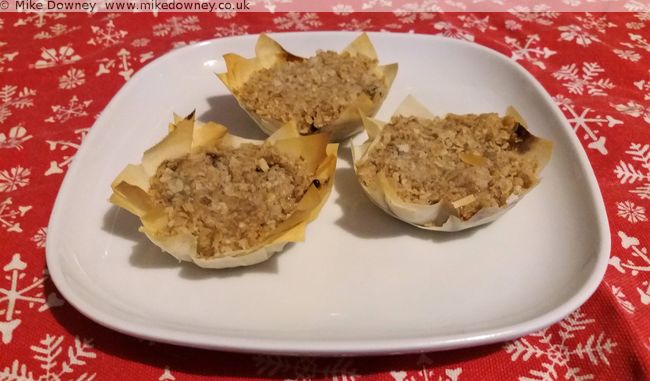
The crumble topping was made using equal weights of oats, wholemeal flour, butter and sugar.
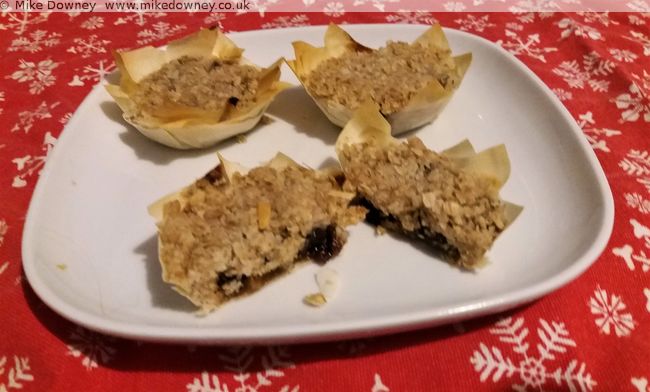
German Market Lunchroulette |
Story location: Home / Blog / food_and_drink / |
| 19/Dec/2017 |
This year at the German Market, I decided to try a few new things, so instead of just choosing at random, I picked something new or different.
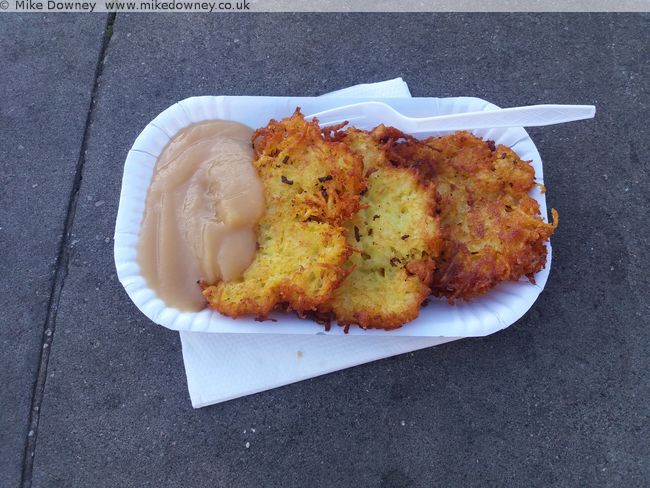
There were a couple of places selling potato pancakes. The first one I went to was serving 'plain' pancakes with either icing sugar or apple sauce.
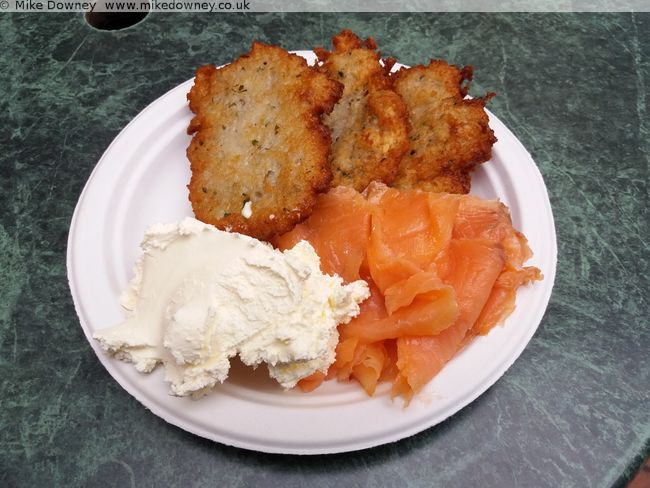
A few days later I went to a different stall and had savoury potato pancakes with smoked salmon and creme fraiche.

Roast pork bap
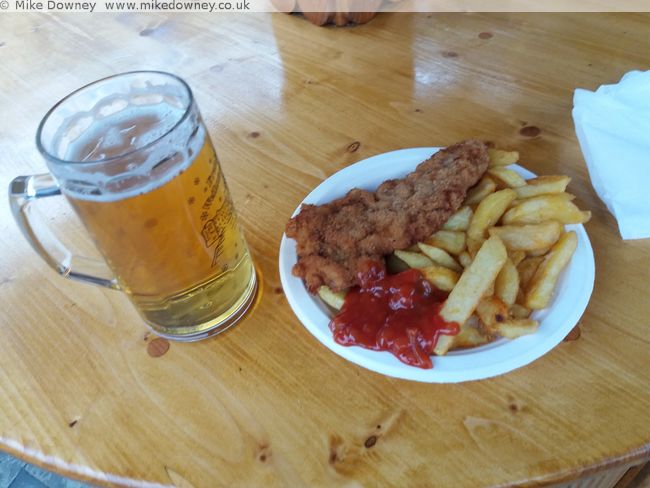
Schnitzel and chips
International A-Z: Hembesha (Eritrean Bread) |
Story location: Home / food_and_drink / a_to_z / |
| 11/Nov/2017 |
My latest attempt in my international breads comes from Eritrea. There appear to be both sweet and spicy versions of this bread, but I decided to try the sweet version.
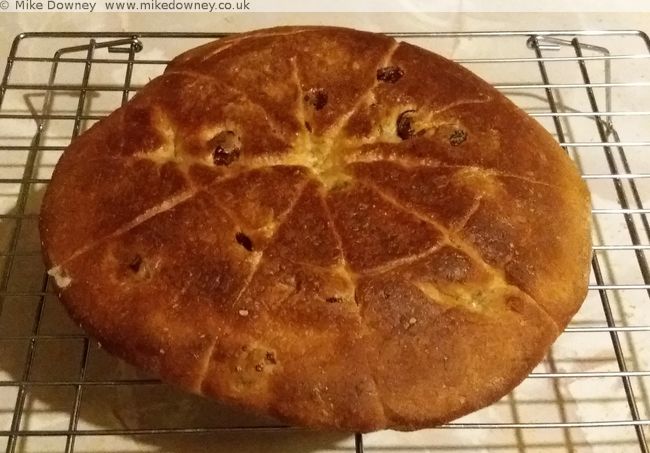
Ingredients
- 250g Flour (I used a mixture of white and wholemeal bread flour)
- 125g milk
- 1 egg
- 50g butter or margarine (melted)
- 25g sugar
- 50g sultanas (soaked in water)
- yeast
- ½tsp salt
- ½tsp cumin
I simply put everything in the bowl and used our electric mixer. The mixture was a bit soft but I left it to rise for an hour or so before knocking it back and re-kneading it. After the second kneading, the mixture was a bit firmer and easier to handle.
I shaped the dough into a disk, cut some 'spokes' and left it to rise again. Instead of baking in an oven, this bread is cooked in a covered frying pan.
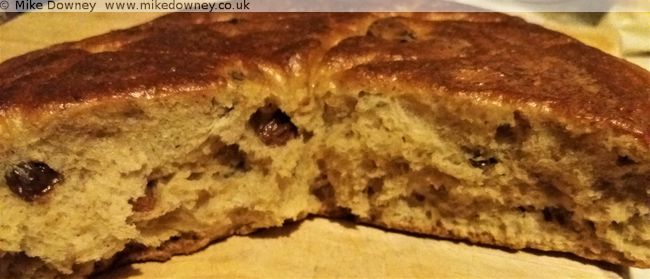
I don't recall having cumin in a sweet recipe before and it works well, probably because there isn't much and the flavour isn't too strong. The bread is a bit like a hot cross bun. If mixed spice mixed fruit/mixed peel was used, it would be difficult to tell the difference between them.
More Victoria Square Lunchroulette |
Story location: Home / Blog / food_and_drink / |
| 18/Oct/2017 |
The food market was back in Victoria Square so I went again to see what was available. There was a new Turkish Food stall which I hadn't seen before so I decided to get my food from there and used the random number app to choose off their menu. I had a spicy chicken wrap which was well filled and tasty.
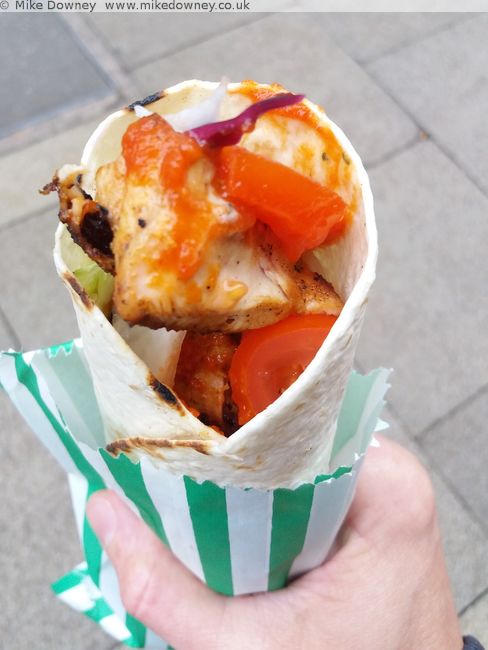
International A-Z: Djibouti flatbreads |
Story location: Home / food_and_drink / a_to_z / |
| 23/Sep/2017 |
I actually made these a few weeks ago but didn't get around to writing it up at the time. The flatbreads are like a cross between a crumpet and a galette style pancake.
Traditionally they are made using Teff Flour which appears to be naturally gluten free. There are several versions of the recipe which use a mixture of plain flour with some gluten free flours so I decided to try my own version. Originally I used a cup of plain flour with 2 tablespoons each of the other flours but the mixture came out a bit stretchy after fermenting so the version below has the amounts adjusted to reduce the amount of wheat flour to make the mixture less stretchy.

- ½ cup plain flour
- ½ tbs fine cornmeal
- ½ tbs buckwheat
- yeast
- salt
- 1 tsp sugar
- 1.5 cups water

Method
Whisk everything together, cover with clingfilm and leave in the fridge overnight. In the morning, take the batter out of the fridge and allow to reach room temperature.
Heat up any lightly oil a frying pan. Spoon in some of the mixture and spread to form a thin pancake.
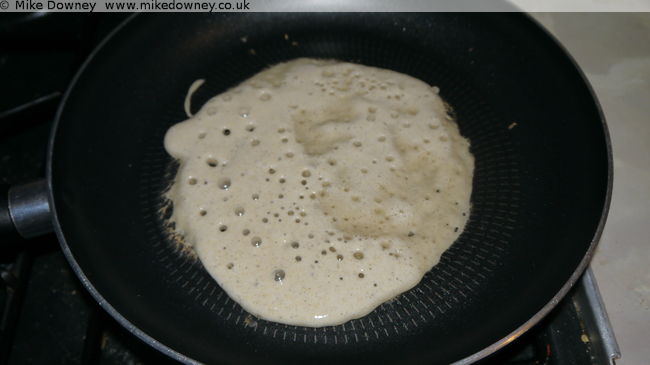
When it has cooked on one side, flip it over to cook the other side. Continue until all the batter has been used. To serve, return one of the pancakes to the pan, add the filling, roll up and reheat.
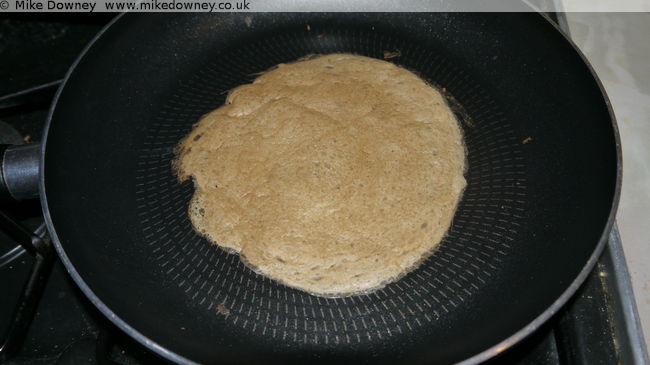
We're going on a Bearroulette |
Story location: Home / Blog / birmingham / |
| 30/Aug/2017 |
Birmingham is full of bears. I would often combine looking for bears with Lunchroulette. Most of the time I ended up near somewhere selling baguettes and I didn't bother taking photos of those. My lunchroulette photos are up to date but I realised that I hadn't uploaded any of the bear photos yet.







Click on the thumbnail to view the image
Lunchroulette Update |
Story location: Home / Blog / food_and_drink / |
| 19/Jul/2017 |
A few weeks ago I went to the food market in Victoria Square and randomly chose which stall to get my lunch from. I ended up at the vegan burger one. I thought I'd try the pulled-pork style Jackfruit Burger. The 'cheese' was a bit strange but the burger itself was ok.

I did the same thing today but the first roll of the virtual dice selected the coffee van so I tried again and ended up with a tray of filled dumplings. They were nice but the best part of the meal was the crunchy chilli sauce which had crushed nuts in it.
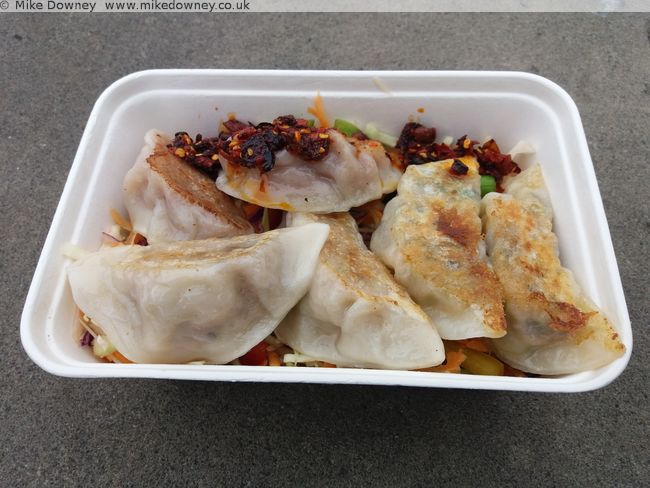
Raspberry Pi + LED + Photodiode + Fidget Spinner |
Story location: Home / computing / raspberry_pi / |
| 05/Jun/2017 |
Several years ago I had the idea of using a camera or light sensor to measure how fast a hamster runs in a wheel. I never actually did anything about it but I recently saw a fidget spinner in action and decided to measure its speed using LEDs and a photodiode.
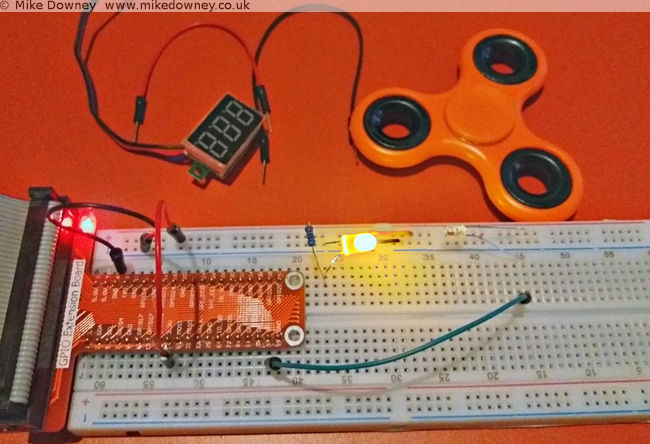
The circuit was incredibly simple. At first I thought I might need to connect the photodiode to an amplifier or schmitt trigger or something like that but when I pointed the LED directly into the photodiode and attached the voltmeter to the latter, the voltage went close to zero when I blocked the light and went over 3v when I let the light through. It looked like I could just connect the photodiode directly to a GPIO pin of the Raspberry Pi to measure when the light path was blocked.
The next step was to write some code to detect when the GPIO pin changed state and to measure the frequency. When I logged into the Pi, I found a script which actually did exactly that. I'm not entirely sure where this came from. I may have adapted it from a C exmaple from the pigpio project but I can't actually remember. It uses NumPy to calculate the average.
Wiring it up
Connecct the LED to the 3.3V output of the Pi, through a 220 ohm resistor. Connect the photodiode 'in reverse': the long leg to GPIO 26 of the Raspberry Pi and the short leg to the 3.3v supply. When the light level is low, the photodiode will act like a normal diode and block the current. When the light level is high, the current will flow and the GPIO pin will detect a 'high' signal.
Results

I fired up the edge.py script, started the figet spinner and lowered it into into the light beam. I had to be careful to avoid it touching the breadboard, the LED or the photodiode so I almost certainly didn't manage to spin it as fast as I could. I ran the script a few times and got numbers between 30-50 Hz. Since the spinner had 3 lobes, this means that it was only spinning between 10 and 15 times per second.
Matt Parker has a video where he uses a spectrum analyser to measure the frequency of the spinner. He uses a compressed air can to reach much higher speeds.
